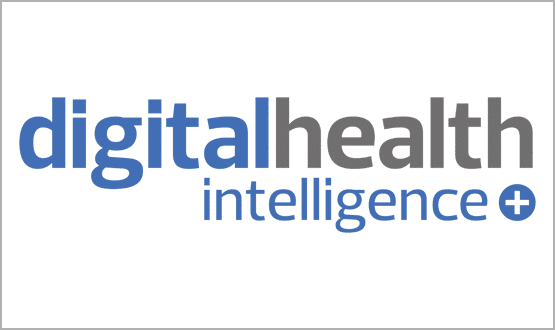The 12 months of 2014
- 29 December 2014

Twenty fourteen turned out to be a year of waiting for things: for a financial crisis, for a plan to avert one; for a tech fund announcement, for an NHS IT strategy, for another tech fund announcement. Fortunately, some big deployments were made, and some exciting tech was launched. Lyn Whitfield looks back through EHI’s newsletters.
January: The NHS made it through a warm, wet Christmas and New Year without suffering a winter crisis; but NHS England was still fretting. Its outgoing chief executive, Sir David Nicholson, had warned the previous summer that the health service was facing a funding gap of £30 billion by 2020-21, and the draft planning guidance for 2014-15 said commissioners should draw up five year plans to address this.
A week later, NHS England came under fire for an information leaflet about the care.data programme to expand the Hospital Episode Statistics, link them to GP and other data sets, and release the information to researchers. The leaflet failed to name the scheme or to include an opt-out leaflet. Then it failed to reach most households.
February: As the row about care.data rumbled on, NHS England made progress with its plans for an integrated digital care record, as outlined in guidance the previous July. In a board paper, it announced that three ‘exemplar’ projects, using different approaches and suppliers, would be funded in Cumbria, Bradford and Bristol.
Despite this, trusts were still waiting to find out whether they had made successful in bids to the first, or ‘Safer Hospitals, Safer Wards’, round of the tech fund. As they waited, Microsoft continued to insist that it was definitely, definitely going to end support for its 2001 operating system, Windows XP on 8 April, even though most NHS trusts (a lot of shops, banks, and the police) were still using it.
March: A special ‘target watch’ in the EHI newsletter marked the 10th anniversary of the NHS Information Standards Board’s announcement that the NHS Number should become the unique identifier for patients within healthcare IT systems. Universal use of the NHS Number has featured in every subsequent NHS IT strategy; and was duly listed as a requirement for projects making bids to the second, or ‘Integrated Digital Care Fund’ round of the tech fund.
April: Simon Stevens took over from Sir David Nicholson as chief executive of NHS England; but immediately continued his message that fundamental change would be needed to cope with an aging population with flat funding. Meantime, the Cabinet Office succumbed to the inevitable and did a deal with Microsoft for a year of additional XP support for the public sector. Trusts were told they should definitely, definitely be off the OS in 12 months.
Also succumbing to the inevitable, NHS England suspended the care.data programme; and then announced that 500 GP practices would trial it – or communications about it – in the autumn. EHI launched a sister network to the CCIO Leaders Network, this time for health chief information officers and other IT leaders.
May: The King’s Fund organised a breakfast meeting with particularly good Danish pastries to sweeten the news that an NHS financial crisis was “inevitable”. The Fund warned the NHS had run out of productivity savings; and new, integrated care models were needed. To underline the point, unions warned of strike action over frozen wages. Commissioning support units warned of a more immediately uncertain future; and were eventually slimmed down to just nine networks.
June: The list of trusts that had won money from the first round of the tech fund was finally announced; to considerable surprise that some had been given millions for electronic patient record projects. Because of Treasury requirements for a good return on investment, and the delays that meant money couldn’t be spent in year, some £60m of the £240m fund was clawed back.
Meanwhile, suppliers started to lay out different approaches to the healthcare IT market. Allscripts said it was looking for “smart trusts” for its EPR, after a successful project at Salford Royal. But IMS Maxims went down the open source route, releasing the source code for its EPR, and saying it would form a community interest company with trusts to support it.
July: Things went from bad to worse for care.data, as the Health and Social Care Information Centre was forced to admit issues with access to and use of the previously revered Hospital Episode statistics. Chair Kingsley Manning told EHI the NHS must “earn back the trust of patients” on information use.
In a rare hit for a national IT programme, the re-booted NHS Summary Care Record reached 40m records – just when its former clinical lead, Charles Gutteridge, had predicted that it would. The SCR initially ran into very similar problems to care.data; which really should have learned the lessons. Back on the supplier front, Ian Denley and Markus Bolton returned to run System C, which had been bought by Symphony Technology Group from McKesson.
August: Another, less positive, echo of the NPfIT era was heard when it emerged that the Department of Health had lost its long-standing legal argument with Fujitsu over the company’s departure as local service provider for the South back in 2008. This cost the NHS staggering £700m. In a strongly worded Insider View, EHI editor Jon Hoeksma argued that a full report should have been published; so everybody could learn the relevant lessons.
September: Apple launched its Watch, prompting much excited speculation about the impact that this might have on the healthcare IT market. A week afterwards, Emis announced that it was already using the HealthKit platform fed by the Watch and other suitably enabled products to create a personal health record that could be accessed from Emis Web.
NHS England director of patients and information Tim Kelsey called for sanctions on trusts that failed to digitise; drawing on a report from Imperial College that had annoyed EHI readers earlier in the year. He also said NHS England would set out “carrots and sticks” in its now-delayed NHS IT strategy to get trusts to comply with infrastructure and data standards; including, of course, the NHS Number.
October: The Apple Watch looks fairly futuristic; but it has nothing on a Star Trek-style tricorder. Even so, it emerged that two UK companies have got through to an x-prize final to try and build one. Back in the real world, an EHI survey established that six months after the Cabinet Office did its XP deal with Microsoft two thirds of trusts were still using the OS, and a quarter of them had no plans to stop doing so.
Dean Street Express was announced as the overall winner of the EHI Awards 2014 in association with CGI, while there was great sadness that the winner of the Healthcare IT Champion of the Year, Professor Rick Jones, had passed away just before voting opened.
Then, at the end of the month, Simon Stevens announced his big plan to try and meet the Nicholson Challenge: the ‘Five Year Forward View.’ This called for a push on public health, to try and tackle demand, and a major shake-up of the hospital, primary, and community and social care sectors try and improve efficiency. National IT systems were identified as the “glue” to hold everything together.
November: Also at the end of October, Cambridge University Hospitals became the first in the country to go-live with the Epic EPR. The project leaders reflected on the ups and downs of the go-live at EHI Live 2014; where the second round of the Nursing Technology Fund was announced, but the winners of the second round of the tech fund weren’t.
A week after the show, NHS England was able to release its long-awaited NHS IT strategy. Except that it insisted that ‘Personalised Health and Care 2020’ wasn’t a strategy but a “framework.” PHaC2020 set out to explain how technology could deliver on the Five Year Forward View, and to set out the role of central and local action in making sure that it did; without resorting to the “top down” approach of NPfIT, or the “let a thousand flowers bloom” approach of Information for Health, the strategy before it.
Tim Kelsey told EHI that the framework’s new targets – for all transfers of care to be completed without paper notes by 2018 and for all patient care records to be digital by 2020 – were “hard stops”; to some scepticism from readers who have seen NHS IT targets come and go.
December: EHealth Media, the company behind EHealth Insider, had some news of its own; the creation of a new company, Digital Health Intelligence, to run news, the Intelligence research service, and the CCIO and Health CIO networks, following the sale of EHI Live and EHI Awards.
Chancellor George Osborne made his autumn statement and announced an extra £2 billion for the NHS, which health secretary Jeremy Hunt said would be used to fund the first year of the 5YFV. Some of the extra money wasn’t extra. The “transformation fund” was smaller than billed. The NHS went back to hoping for a warm, if not a wet, Christmas and New Year. NHS IT went on hoping for a tech fund 2 announcement…




